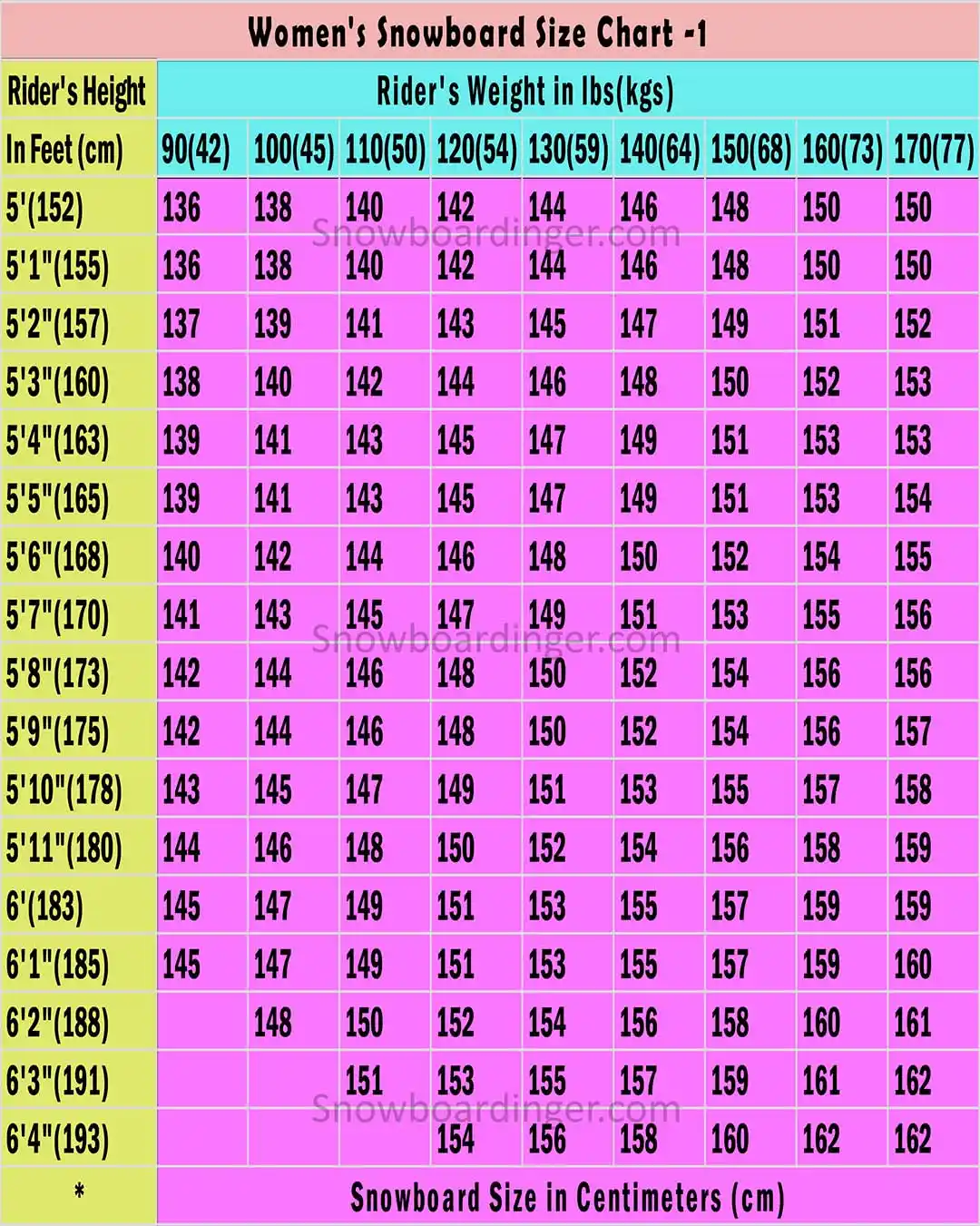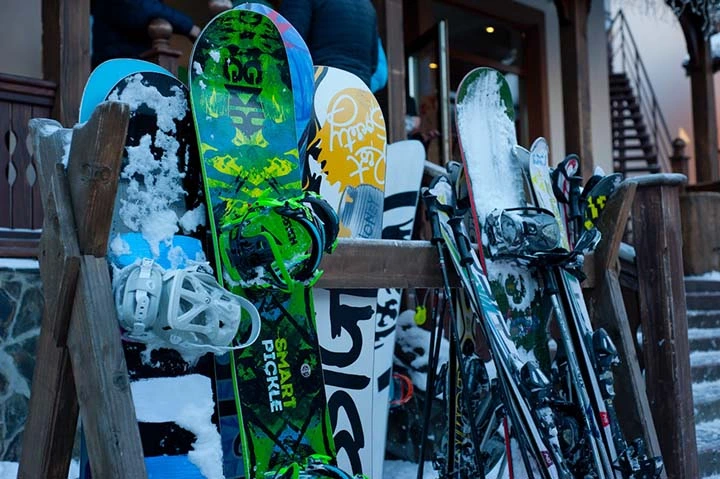If you are wondering how much do snowboards weigh then you should know that the weight of a snowboard can vary depending on its size, shape, construction, and intended use. Generally, a snowboard can weigh anywhere from 2 to 10 pounds (0.9 to 4.5 kilograms), with the average weight being around 6 pounds (2.7 kilograms).
Snowboards designed for freestyle and park riding tend to be lighter, while those designed for powder and backcountry riding tend to be heavier. Additionally, a longer snowboard will generally weigh more than a shorter one, and a wider snowboard will weigh more than a narrower one.
It’s worth noting that the weight of a snowboard is just one factor to consider when choosing a board. Other important factors include the board’s flex, shape, and camber profile, as well as your own riding style and ability level.
Which things in snowboarding get affected by the weight of a snowboard and why?
The weight of a snowboard can affect several aspects of snowboarding, including:
Maneuverability
A lighter snowboard is generally easier to turn and maneuver, making it more suitable for freestyle riding and park features. Heavier snowboards may require more effort to turn and maneuver, but can provide more stability and control at higher speeds.
Floatation
A wider and longer snowboard is typically used for powder and backcountry riding, as it provides better floatation on deep snow. However, the weight of the snowboard can also affect its floatation. A heavier snowboard may sink deeper into the snow, making it more difficult to stay afloat.
Speed
A heavier snowboard can provide more stability at high speeds, as it is less likely to vibrate or chatter. However, a lighter snowboard may be more nimble and responsive, allowing for quicker turns and faster edge-to-edge transitions.
Endurance
Carrying a heavier snowboard can be more tiring, especially if you need to hike or climb to reach your desired location for snowboarding. Lighter snowboards can be more comfortable to carry over longer distances, making them better suited for backcountry riding.
Check out How long does it take to learn snowboarding by clicking here.
Why some snowboards are lighter and others Heavier?
Snowboards can vary in weight based on several factors, including their size, shape, construction materials, and intended use. Here are some reasons why some snowboards are lighter or heavier than others:
Size
The size of a snowboard can affect its weight. Generally, longer and wider snowboards tend to be heavier than shorter and narrower ones, because they require more materials to manufacture.
Shape
The shape of a snowboard can also impact its weight. For example, snowboards with a lot of camber or rocker tend to be lighter than those with a flat profile, because they require less material to manufacture.
Construction materials
The materials used to construct a snowboard can also affect its weight. High-performance snowboards may use lightweight materials such as carbon fiber or Kevlar, which can make them lighter but also more expensive. Lower-end snowboards may use heavier materials such as fiberglass or wood, which can make them more affordable but also heavier.
Intended use
Snowboards designed for different riding styles may be lighter or heavier depending on their intended use. For example, snowboards designed for park and freestyle riding tend to be lighter and more maneuverable, while those designed for powder and backcountry riding tend to be heavier and more stable.
You should understand that the weight of a snowboard is a balance between strength, durability, and performance. Snowboard manufacturers try to strike a balance between these factors to create a snowboard that performs well and meets the needs of different riders.
What are the materials used in making snowboards and how do they contribute to the weight of the snowboards?
There are several materials that can be used in the construction of snowboards, and each material can contribute to the weight of the snowboard. Here are some of the most common materials used in snowboard construction and how they affect the weight of the snowboard:
Wood
Most snowboards have a wooden core, which provides the board with its flex and stability. Different types of wood can be used in the core, such as poplar, bamboo, or paulownia. Wood is relatively lightweight, but the thickness and density of the core can impact the overall weight of the snowboard.
Fiberglass
Fiberglass is a woven material that is used to reinforce the snowboard’s core and create torsional stiffness. Fiberglass is lightweight and provides strength, but the amount and type of fiberglass used can affect the weight of the snowboard.
Carbon fiber
Carbon fiber is a lightweight and strong material that can be used in high-performance snowboards to provide additional strength and responsiveness. However, carbon fiber can be expensive and may add weight to the snowboard.
Kevlar
Kevlar is a durable and lightweight material that is used in some high-end snowboards to reinforce the board and provide additional strength. Kevlar can add weight to the snowboard, but it can also improve its durability.
Metal
Metal can be used in the edges and other parts of the snowboard to provide additional durability and stability. However, metal is heavy and can add weight to the snowboard.
The materials used in snowboard construction can impact the weight of the snowboard, with some materials being lighter and others heavier. Snowboard manufacturers use a combination of materials to create a snowboard that is strong, durable, and performs well, while also balancing the weight of the board for the intended use and rider preference.
Comparison of snowboards made with different materials according to their weight
Lets do comparison of some popular snowboards and their weights:
Burton Process Flying V Snowboard 2023
Burton Custom Snowboard: The Burton Custom Snowboard is a classic all-mountain snowboard that has been around for decades. The board has a wood core and fiberglass construction, and its weight varies depending on the size. For example, a 158 cm board weighs around 3.9 kg (8.6 lbs), while a 166 cm board weighs around 4.2 kg (9.3 lbs).
Lib Tech Travis Rice Pro Snowboard
The Lib Tech Travis Rice Pro Snowboard is a high-performance all-mountain board designed for backcountry riding. The board has a core made of a mix of woods, including aspen and paulownia, and a fiberglass and basalt construction. The weight of the board varies by size, with a 157 cm board weighing around 3.6 kg (8.0 lbs), while a 164 cm board weighs around 3.9 kg (8.6 lbs).
Jones Explorer Snowboard
The Jones Explorer Snowboard is a versatile all-mountain board designed for intermediate to advanced riders. The board has a wood core and a fiberglass and carbon fiber construction. The weight of the board varies by size, with a 157 cm board weighing around 3.6 kg (8.0 lbs), while a 162 cm board weighs around 3.8 kg (8.4 lbs).
K2 Raygun Snowboard
The K2 Raygun Snowboard is an affordable all-mountain board that is designed for intermediate riders. The board has a wood core and a fiberglass construction. The weight of the board varies by size, with a 155 cm board weighing around 3.4 kg (7.5 lbs), while a 160 cm board weighs around 3.6 kg (8.0 lbs).
Capita Defenders of Awesome Snowboard
The Capita Defenders of Awesome is a versatile all-mountain board that has won multiple awards. The board has a wood core and a fiberglass and carbon fiber construction. The weight of the board varies by size, with a 156 cm board weighing around 3.5 kg (7.8 lbs), while a 158 cm board weighs around 3.6 kg (8.0 lbs).
Ride Warpig Snowboard
The Ride Warpig is a unique all-mountain board that is designed to be ridden shorter than traditional boards. The board has a wood core and a fiberglass construction. The weight of the board varies by size, with a 148 cm board weighing around 3.4 kg (7.5 lbs), while a 158 cm board weighs around 3.7 kg (8.1 lbs).
Never Summer Proto Type Two Snowboard
The Never Summer Proto Type Two is a high-performance all-mountain board that is designed for advanced riders. The board has a wood core and a fiberglass and carbon fiber construction. The weight of the board varies by size, with a 154 cm board weighing around 3.5 kg (7.7 lbs), while a 160 cm board weighs around 3.8 kg (8.4 lbs).
And yet Again, it’s important to note that the weight of a snowboard is just one factor to consider when choosing a board, and that the specific materials used in construction, as well as other design features, can impact the board’s weight.
Should you go for heavy snowboards or lighter snowboards?
The decision to choose a heavy or light snowboard ultimately depends on your personal preferences and riding style. Here are some factors to consider:
Riding style
If you prefer riding at high speeds and making big turns, a heavier snowboard may offer more stability and control. On the other hand, if you prefer doing tricks and jumps, a lighter snowboard may be easier to maneuver in the air.
Terrain
The type of terrain you ride can also impact your choice of board weight. If you primarily ride on groomed runs, a heavier board may offer more stability and edge hold. However, if you frequently ride in the backcountry or on powder, a lighter board may be easier to maneuver in deeper snow.
Physical ability
If you are a beginner or have less physical strength, a lighter snowboard may be easier to handle and maneuver. However, if you have more experience and strength, a heavier board may offer more stability and control.
Personal preference
The most important thing, the decision to choose a heavy or light snowboard comes down to personal preference. Some riders prefer the feel of a heavier board, while others prefer a lighter board. It’s important to test out different weights and find the one that feels most comfortable for you.
CONCLUSION
Snowboard weight can impact performance and depends on factors like materials, construction, and design. Lighter snowboards are generally easier to maneuver, better for tricks and jumps, and may be preferred by beginners or those with less physical strength. Heavier snowboards tend to be more stable at high speeds, better for groomed runs, and may be preferred by advanced riders with more strength. Factors to consider when choosing a board include riding style, terrain, physical ability, and personal preference. Ultimately, the best choice depends on individual factors and testing out different weights to find what feels most comfortable for you.




